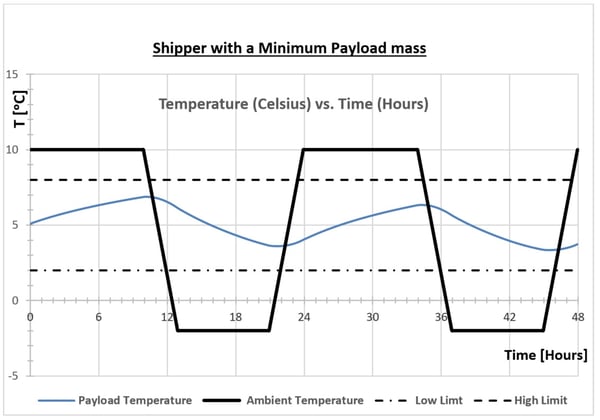
Shipping temperature-sensitive materials can pose a challenge in preventing spoilage and/or product ineffectiveness. Cold chain shipping systems are designed and qualified so that these products do not reach temperatures outside of their required storage ranges while the shippers are subjected to external ambient temperatures during transport and distribution.
The thermal performance of these systems depends on several parameters, including outer surface area, insulation material and thickness, refrigerant or Phase Change Material properties, and related heat transfer phenomena. One of the main thermal performance dependent parameters to consider is payload mass.

For most qualified cold chain shipping packages, the payload has both a minimum mass and a maximum mass. However, shipping with a minimum payload mass can lead to fluctuation of product temperatures. For example, the product in a refrigerated system could reach close to its low limit of 2°C and/or high limit of 8°C. The best way to combat this issue is by increasing the payload mass to a maximum, which can help minimize the temperature fluctuation and keep the product at temperatures very close to its initial storage condition.




